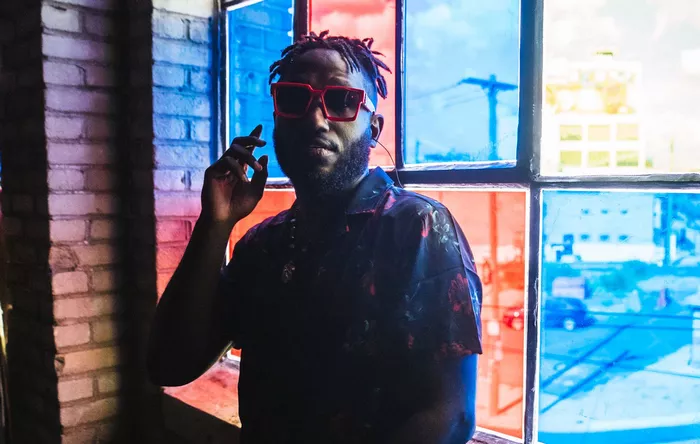Rap is one of the most distinct and influential musical genres in the world. Originating in the Bronx during the 1970s, it has evolved into a global phenomenon, blending rhythm, poetry, and storytelling. While many forms of music emphasize melody and harmony, rap centers around rhythmic vocal delivery and lyrical content. This article explores the elements that make rap unique, from its cultural roots to its technical aspects.
The Origins of Rap: A Cultural Movement
The Birth of Rap
Rap emerged as a voice for marginalized communities. In the 1970s, African American and Latino youth in New York City sought a way to express their struggles and celebrate their culture. DJs like Kool Herc pioneered the use of turntables to create continuous beats, forming the foundation of rap music.
A Connection to Oral Traditions
Rap is deeply rooted in oral traditions. Storytelling, call-and-response techniques, and rhythmic speech have been a part of African and Afro-Caribbean cultures for centuries. Rap borrows these traditions, transforming them into a modern art form.
The Role of Hip-Hop Culture
Rap is one of the four elements of hip-hop culture, alongside DJing, breakdancing, and graffiti art. This connection ties rap to a broader cultural movement, emphasizing its role as more than just a musical style—it is a way of life.
Lyrical Mastery: The Core of Rap
The Power of Words
Rap is unique because it prioritizes lyrics. While other genres may focus on melody or instrumental prowess, rap centers on the art of verbal expression. Rappers use their words to tell stories, critique society, or convey personal experiences.
Complex Rhymes and Wordplay
Rap is known for its intricate rhymes and clever wordplay. Artists often employ internal rhymes, multisyllabic rhymes, and double entendres to create depth and complexity in their lyrics. These techniques set rap apart as a genre requiring linguistic skill.
Storytelling and Narratives
Many rap songs tell compelling stories. From recounting personal struggles to describing life in urban neighborhoods, storytelling is a hallmark of rap. This narrative focus allows listeners to connect with the artist on a deeper level.
Freestyling: Improvisational Genius
Freestyling, or improvising lyrics on the spot, is a unique aspect of rap. This skill showcases a rapper’s creativity and quick thinking, setting it apart from most other genres that rely on pre-written compositions.
The Rhythmic Foundation of Rap
The Role of Beats
Rap relies heavily on rhythm. The beats, often created by producers, serve as the backbone of a rap song. These beats can range from simple loops to complex productions, but they always provide a strong rhythmic structure.
Flow: The Art of Delivery
Flow refers to a rapper’s vocal rhythm and cadence. It involves how well an artist fits their lyrics into the beat. A great flow can make a song memorable, while a poor flow can detract from its appeal.
The Use of Syncopation
Syncopation, or the placement of rhythmic accents on off-beats, is common in rap. This technique creates a dynamic and engaging listening experience, distinguishing rap from more straightforward rhythmic styles.
Sampling and Production: Innovation in Sound
The Art of Sampling
Sampling is the practice of using snippets of existing recordings to create new music. Rap producers often sample funk, soul, and jazz records to craft beats. This practice links rap to its musical predecessors while fostering innovation.
Layered Production Techniques
Rap production often involves layering multiple sounds, such as drum machines, synthesizers, and vocal effects. This complexity gives rap its rich and diverse sonic palette.
Collaboration Between Rappers and Producers
The relationship between rappers and producers is crucial. Producers like Dr. Dre and Kanye West have shaped the sound of rap, demonstrating the genre’s reliance on both vocal and instrumental talent.
Cultural and Social Impact of Rap
A Platform for Social Commentary
Rap has long been a tool for social critique. Artists like Tupac Shakur and Kendrick Lamar address issues such as racism, poverty, and police brutality. This focus on social justice makes rap a powerful medium for change.
Global Influence
Rap has transcended its origins to become a global phenomenon. Artists from different countries incorporate local languages and cultural elements into their music, showcasing rap’s adaptability and universal appeal.
Empowerment and Representation
Rap empowers marginalized voices, giving them a platform to be heard. It also provides representation for communities often overlooked in mainstream media, reinforcing its importance as a cultural force.
The Evolution of Rap Styles
Old School vs. New School
Old-school rap focused on simple beats and party themes, while new-school rap introduced more complex production and diverse topics. This evolution highlights rap’s ability to adapt and grow over time.
Subgenres of Rap
Rap has spawned numerous subgenres, including gangsta rap, conscious rap, trap, and mumble rap. Each subgenre offers a unique take on the art form, catering to different audiences and tastes.
Influence of Technology
Advancements in technology have shaped rap. Digital recording, streaming platforms, and social media have changed how rap is produced, distributed, and consumed, ensuring its relevance in the modern age.
See Also: 8 Step-by-Step Guide to How to Make a Latin Trap Beat
Conclusion
Rap stands out from other musical genres because of its focus on lyrical mastery, rhythmic complexity, and cultural significance. It is more than just music—it is a form of expression, a cultural movement, and a platform for change. Whether through its storytelling, innovative production, or social impact, rap continues to evolve and inspire. It remains a powerful testament to the creativity and resilience of the communities that birthed it, making it a truly unique and enduring art form.
Related Topics
Drill vs Trap Music, What’s the Difference?

